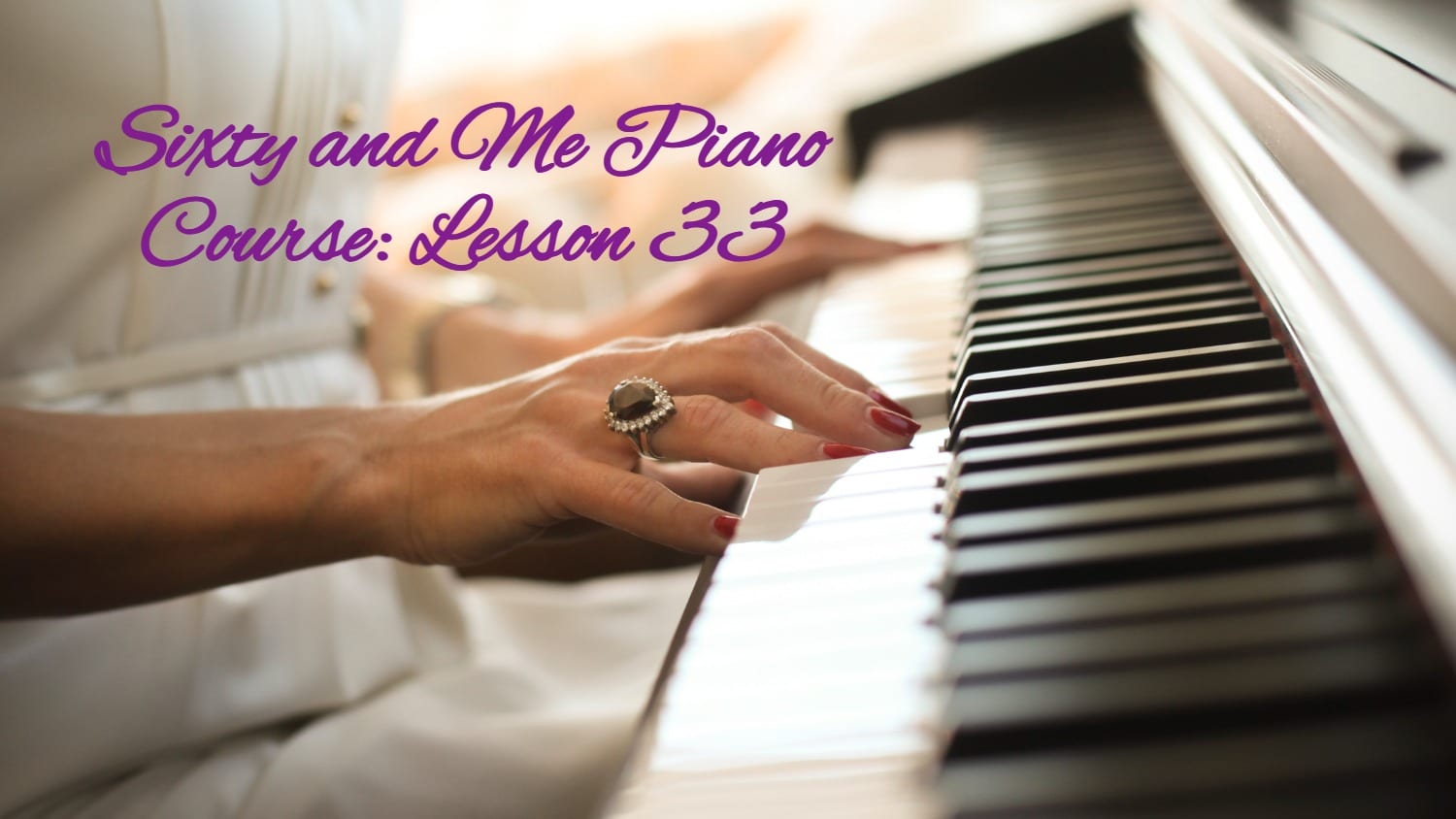
Piano Lesson 27: Can you Play the Can Can?
Welcome to Piano Lesson 27! Today we will be learning some new notes and playing some new songs including Jacques Offenbach’s Can Can. Be sure to think about your posture this week, keeping your back straight, your shoulders relaxed, and your wrists horizontal, and your feet flat on the floor, as you play. It is always a good idea to go back to review posture in Lesson 1, Video 2.1.
NOTE: If you are just joining us for the first time, you can find my previous Sixty and Me Free Piano Lessons on my Author page. You can join our lessons any time and move at your own pace!
27.1 New Notes B5 and C5 and Stem Direction, p.76
Today you will be learning two new notes on the Treble Staff – woohoo! B5 which is the B above middle C, and C5, the C which is one octave (eight notes) above middle C. When you move from middle C to C5 in your music, your hand has to make a stretch or a jump (depending upon how big your hand is). I have small hands, but I have no trouble reaching an octave.
I also discuss stem direction – the rule is that notes BELOW the middle line of the staff (treble and bass) have stems going UP on the RIGHT of the notehead. Notes ABOVE the middle line have stems going DOWN on the LEFT of the notehead. Notes ON the middle line have stems that can go up or down, and align with the notes nearest to them in the measure.
That means if Treble B5 is followed by high notes, its stem will go down to match the high notes’ stems, and if it’s followed by notes that are low on the staff, its stem will go up. Watch my video for clarification:
27.2 Highlighted Top Line with Random Notes, p.76
The top highlighted line on p.76 presents random notes A5, B5 and C5. Practice playing this line forward and backward, and say or sing the notes when you first play them. The idea is to begin to recognize the notes on site. After you have played it a few times on your own, try playing along with my demonstration video:
27.3 Country Garden, p.76
Country Garden is an old traditional tune you might recognize. It begins with your new note C5, the C above middle C. After you have played it a few times forte and piano, try playing it with me:
27.4 Can Can! p.76
Now that you are learning C5 you CAN play the Can Can! This song is super fun and will teach you a lot about fingering. Notice that sometimes you will play a note twice, changing your fingering the second time playing the note.
For example, in the first line, third measure, you play G with your 5-finger, then the same G with your 4-finger. That’s because you are playing a full octave of notes, and your hand will have to keep moving and adjusting to get to them all.
Similarly, in the last measure of the first line there are two Ds. You play the first D with your 1-finger, then play the second D with your 2-finger so that your hand will be in the optimum position for the following two measures. This type of fingering, along with crossing fingers over other fingers is common, so enjoy practicing these skills in the Can Can!
*Always pay special attention to the circled fingerings, which alert you to move your hand or fingers.*
Passion Practice
- Play Exercise #1 in A, E, and B, with hands together! Play the 5 notes of each position before playing the exercise to be sure you have the correct notes (B position is still the trickiest one to play!) Play each exercise once forte (loudly), and once piano (softly) with your eyes open, then closed, if possible.
- p.76 – Play the highlighted random notes in the first line forward and backward, playing and saying the notes. Play Country Garden once forte and once piano. Play the Can Can at mezzo forte (mf– moderately loud) slowly, watching the fingering. Be sure to watch my demonstration video (above) for rhythm and fingering.
- Chord Calisthenics #5, Appendix viii – Play each set of minor and diminished triads, in E and B, alternating hands. Also review C, G, D and A. See Lesson 26 for a demonstration of Chord Cali #5.
- If you have time, review Spring, by Vivaldi, on p.63. You can watch the Spring demonstration video from Lesson 20. Or review Taps on p.65.
Let’s Have a Conversation:
Congratulations on learning two new notes! These two little notes will expand your musical horizons enabling you to play Bach’s Minuet and Blue Bells of Scotland in Lesson 28! How does it feel to stretch to these two new notes. Does it feel natural and comfortable for your hand, or do you have to make a leap? Remember I am always happy to answer your questions in the comments below.
Tags Piano Lessons






